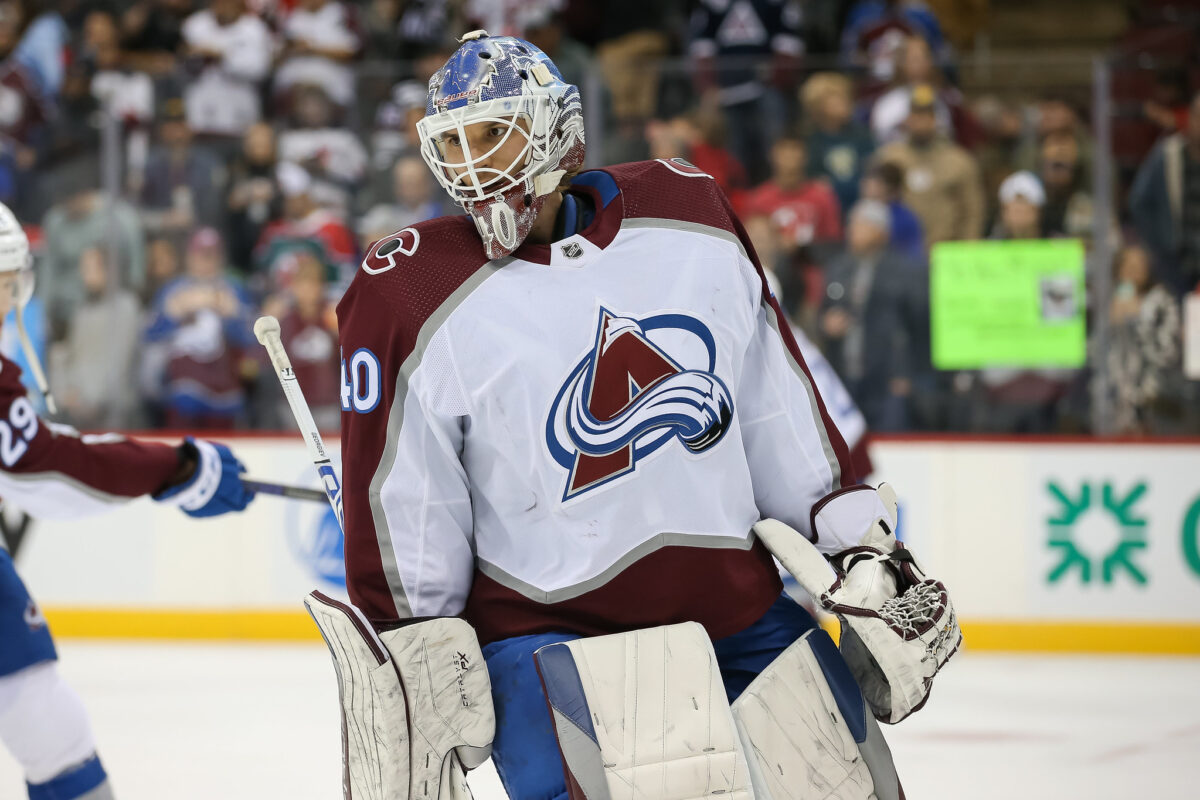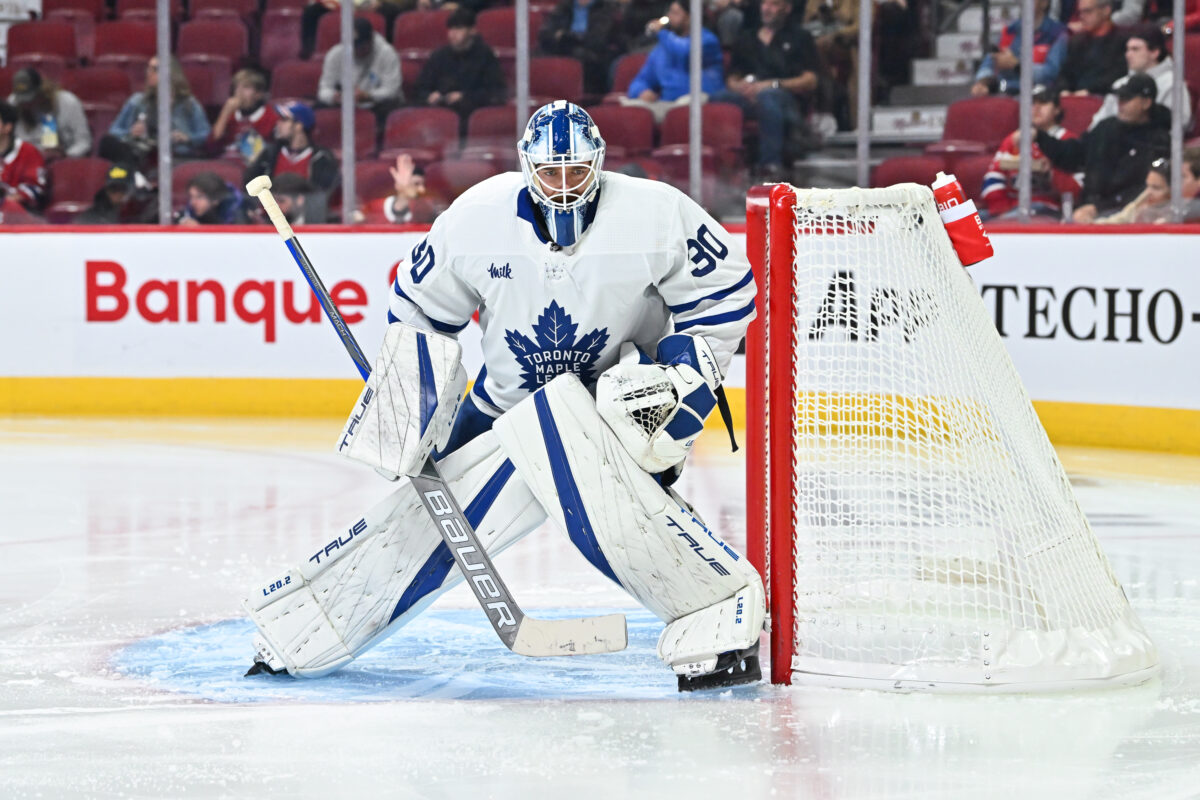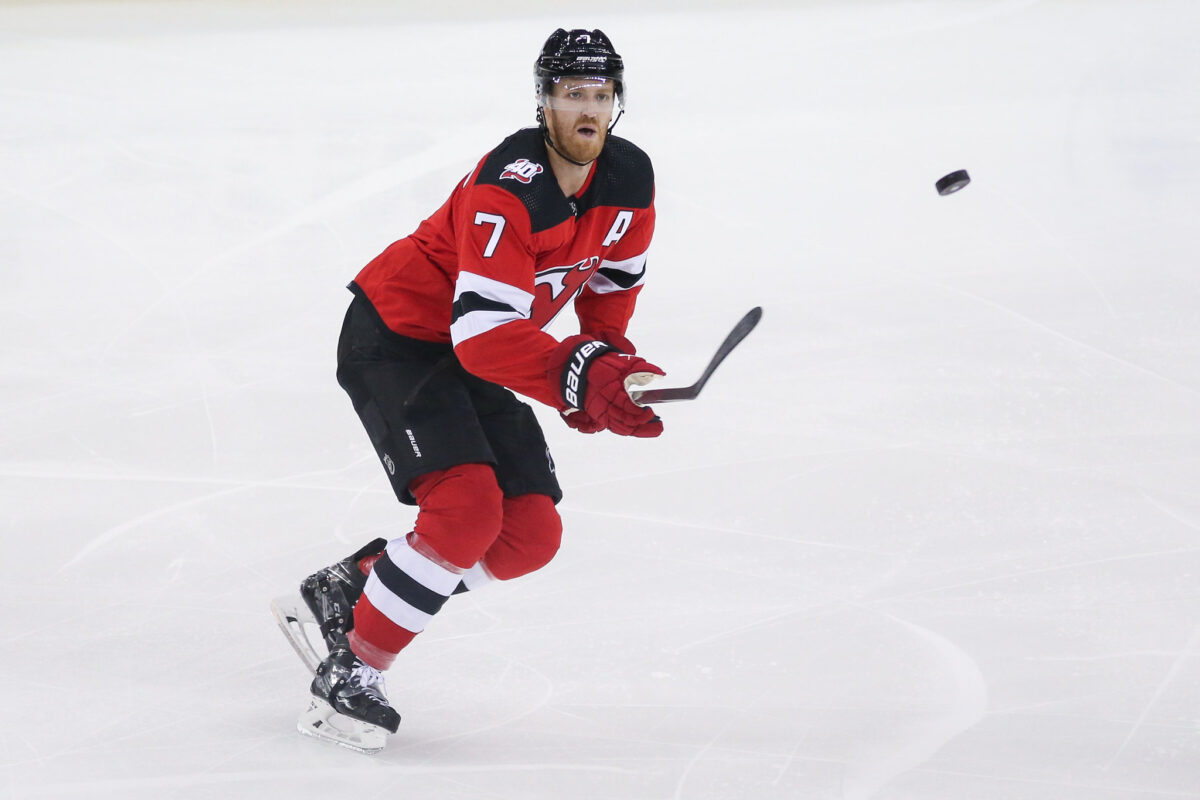Welcome to the fourth edition of the 2022-23 NHL Analytics Report, a weekly roundup of the latest analytical trends and a collection of statistical observations from around the league. To better understand the terms being used and the reasons behind their inclusion, read THW’s primer on advanced analytics which explores the rapidply-growing landscape of modern hockey analysis. Now, here are five observations – plus a handful of stray tidbits – after another week of NHL hockey.
Avalanche’s Georgiev Making Strong Case For Vezina Trophy
After Darcy Kuemper parlayed his role in the Colorado Avalanche’s Stanley Cup triumph into a long-term contract with the Washington Capitals, the onus was on the champions to find a capable replacement. Although the Avalanche didn’t rely heavily on their goaltenders during their run – they led the playoffs with 4.25 goals per game – some competency was required. Fortunately, Alex Georgiev (acquired from the New York Rangers) has empathically staked his claim to the starting job through the first quarter of the 2022-23 campaign.
Georgiev has thrust himself into the Vezina Trophy conversation with his early performances and boasts a .933 save percentage (SV%), underlining a pristine 10-2-1 record compiled over 13 games. His SV% is also tied for second in the NHL among goalies to have played at least five games this season, putting him in the company of the league’s elite at the position, including Ilya Sorokin and Connor Hellebuyck.

Despite sitting fourth in the league by goal differential (plus-21), the Avalanche haven’t performed like an elite defensive unit so far this season, although injuries have played their part. According to Natural Stat Trick, the defending champions rank 20th in their per-60-minute rate of high-danger chances allowed and 21st in their rate of shots conceded in all situations. Georgiev has faced both a heavy and difficult workload in terms of volume and shot quality, and that context is borne out in his advanced metrics.
According to MoneyPuck, Georgiev has saved 9.6 goals above expected (GSAx) and ranks within the top 20 of qualified goalies (minimum five games played) by both medium- (13th) and high-danger (20th) SV%. The Avalanche play in a manner that invites a greater-than-average level of shot attempts from opponents, but Georgiev has proven effective in stifling the most dangerous of those opportunities.
To this point, the 26-year-old’s results represent an incredible return on investment and exceed what the Avalanche could have expected of him prior to the start of the season. In fairness, many will dismiss his play until he performs in the playoffs but Georgiev has temporarily dispelled the concerns many had about his ability to handle and perform in a leading role.
Kraken a Well-Oiled Machine in Year 2
There’s no sugarcoating it – the Seattle Kraken put on an underwhelming performance in their long-awaited return to the NHL fraternity. They finished at the bottom of the Pacific Division and 30th in the overall standings with a record of 27-49-6 while sporting a dismal goal differential of minus-69 and scoring the fourth-fewest goals in the league. There was work to be done on both the offensive and defensive fronts and with the help of several key offseason additions, the Kraken are firing on all cylinders in year two.
Winger Andre Burakovksy, signed as a free agent from the Avalanche, leads the team in scoring with 21 points in 21 games. Justin Schultz (13 in 21) and Oliver Bjorkstrand (11 in 21) are two other newcomers making an impact in their debut seasons. Calder Trophy favourite Matty Beniers is also showing why he was the second-overall pick in 2021, tallying 18 points in 21 games to lead all freshmen.
Both the new faces and the retreads have picked up the pace and as a result, the Kraken can trot out eight players scoring at a pace that would see them eclipse Jared McCann’s team-leading 50 points from last season. Given that their underlying numbers aren’t all that much different from 2021-22, that increased scoring punch has the Kraken gunning for the Pacific Division crown, only six points behind the Vegas Golden Knights with three games in hand.

The Kraken are respectable at 5v5, controlling 53.1% of all shots (SF%) while conceding the sixth-lowest rates of high-danger chances (HDCA/60) and expected goals (xGA/60). They were a capable defensive outfit last season as well but were torpedoed by atrocious goaltending, owning the league’s worst team SV% and seeing marquee signing Philipp Grubauer allow the most goals above expected in the entire league. Veteran journeyman Martin Jones has proved a capable stopgap, stepping into the starting role after Grubauer’s early-season injury, and currently ranks 10th in cumulative GSAx (plus-5.1).
Even with a bolstered forward group and suddenly competent goaltending that doesn’t undermine their defensive structure, the Kraken shouldn’t be considered a true contender. Even so, they are much improved over 2021-22 and are on pace to add over 50 points to last season’s point total, undoubtedly a mark of significant progress.
Golden Knights’ Carrier Providing Unexpected Offensive Punch
Given that this series aims to shine a light on under-the-hood results and contributions, what better way to do so than spotlighting a player delivering exceptional value in a depth role? Despite playing just over 11 minutes a night at 5v5 (with very little special teams usage), Golden Knights winger William Carrier has been one of the most productive forwards on a per-60-minute basis while scoring eight goals in 23 games thus far.
Among forwards to have played at least 100 5v5 minutes this season, Carrier ranks ninth in goals, seventh in shots and expected goals, and first in high-danger chances, all per 60 minutes. Most of his chance generation is derived from crashing the net as he’s created rebound chances at a top-70 rate so far this season. He constantly finds himself in dangerous areas through a relentless motor and in combination with Keegan Kolesar and Nicolas Roy, has been one-third of arguably the best depth line in the league. They’ve only accounted for about 50% of the expected goals share, but their expected goals creation ranks 29th out of 76 qualified lines (minimum 75 minutes).
You may also like:
- Oilers’ Skinner in Line for Vezina Trophy Winning Season
- Colorado Avalanche Won’t Be Contenders This Season
- Oilers: 8 GMs Who Would’ve Been Better Hires Than Stan Bowman
- New York Rangers’ 4 Best Contracts for 2024-25
- 3 Winnipeg Jets Who Could Earn a Roster Spot in 2024-25
Carrier’s success is partly a product of facing lesser competition and without regular powerplay deployment, his scoring totals won’t ever rank among the NHL’s upper crust. However, for the cap-strapped Golden Knights, his obliteration of depth minutes is a safeguard when the team’s stars aren’t clicking, and makes them a four-line juggernaut when everything is going according to plan. The Golden Knights thrive off of physical play and overwhelming the opposition, and Carrier is one of the best on both fronts.
Maple Leafs’ Murray Proving Worthy of Offseason Investment
With the Toronto Maple Leafs and goaltender Jack Campbell opting to part ways last summer, general manager Kyle Dubas was under pressure to find a replacement to capitalize on the team’s current contention window. He chose to pursue a tandem arrangement, recruiting Ilya Samsonov from the Washington Capitals and Matt Murray from the Ottawa Senators to man the crease in 2022-23 and beyond. The pair’s history of injuries and inconsistent play – not to mention Murray’s sizeable price tag – drew the ire of many but after a slow start, Murray’s recent play has mostly confirmed Dubas was right in gambling on the two-time Stanley Cup winner.
The 28-year-old netminder has only played in six games this season after suffering an early-season injury, but those six have suggested he’s in the right headspace for the first time in a long time. Murray’s .927 SV% ranks fourth among goalies to have played in at least five games this season, and he’s saved 4.7 goals above expected, the 13th-highest total to date.

Contrary to popular belief, the Maple Leafs are actually an above-average defensive unit at 5v5. According to Natural Stat Trick, they rank fifth in shots against per 60 (SA/60), ninth in expected goals against per 60 (xGA/60), and 14th in scoring chances allowed per 60 (SCA/60). Narrative and reputation often override actual results, but the Maple Leafs are capable of parrying opponent attempts to a significant degree.
Murray has been able to stop the most dangerous chances during his brief stint. He ranks 32nd among qualified goalies in high-danger SV% (HDSV%), letting the Maple Leafs make riskier decisions while buoyed by the confidence that their goaltender can bail them out on occasion.
Again it’s early and six games is hardly anything approaching a significant sample size, but both Murray and Samsonov have provided positive value through the first quarter of the season. If they maintain their level of play, the Maple Leafs will have one less thing to worry about come the postseason.
Devils’ Hamilton and Siegenthaler Pairing Arguably the NHL’s Best
By both traditional and modern metrics, the New Jersey Devils are a wagon at the moment. The Eastern Conference’s newest heavyweight sits second in the league by points percentage (PTS%) and owns the second-best goal differential (plus-36) in the NHL. Although their volcanic offence is a massive factor in their success (they rank third in goals per game), their scoring is powered by territorial dominance at 5v5. Among those primarily responsible is their top defensive pairing of Dougie Hamilton and Jonas Siegenthaler, consistently driving play at both ends of the ice.

Among 92 defensive pairs to have played at least 100 minutes at 5v5, the Devils’ duo ranks second in expected goals share (64%) and sixth in both scoring chance (62.3%) and high-danger chance share (64.3%). While some pairs see most of their results stem from either elite offensive creation or impenetrable defensive play, Hamilton and Siegenthaler are among the NHL’s best on both counts.
| Statistic | Hamilton-Siegenthaler | NHL Rank |
|---|---|---|
| xGF/60 | 3.66 | 1st |
| xGA/60 | 2.06 | 9th |
| SCF/60 | 38.8 | 3rd |
| SCA/60 | 23.5 | 12th |
| HDCF/60 | 16.1 | 6th |
| HDCA/60 | 9.14 | 16th |
| GF/60 | 4.85 | 4th |
| GA/60 | 1.49 | 11th |
It helps that the Devils’ forward group has either seen significant growth from its young stars such as Jack Hughes, Jesper Bratt, and Nico Hischier, but the defence has thrived at limiting chances while moving the puck quickly up the ice. The role of the modern NHL defenceman has evolved to the point where physicality is no longer the only way to exert influence on the play and relying only on that tool is a fast track to disaster. With their combination of Hamilton and Siegenthaler, they get the best of both worlds and that makes the Devils one of the most dominant even-strength units in the league. Watch out NHL, the next generation of Stanley Cup contenders is here to stay.
Analytical Notes & Observations From Around the NHL
- The Carolina Hurricanes’ Pyotr Kochetkov leads all goaltenders in GSAx per-60-minutes according to MoneyPuck (minimum five games played)
- The Florida Panthers’ line of Matthew Tkachuk, Aleksandar Barkov, and Carter Verhaeghe leads the NHL in chance creation, generating 4.88 expected goals per-60-minutes, according to MoneyPuck
- The New York Rangers’ Chris Kreider leads the NHL in scoring chances (eight) and high-danger chances (five) while shorthanded, according to Natural Stat Trick
- The Vancouver Canucks’ Elias Pettersson and the Dallas Stars’ Jason Robertson are tied for the NHL lead in goals per 60 at 5v5 (1.99)
- The Buffalo Sabres are one of the the most aggressive teams on the penalty kill, ranking second in the NHL in shots, and first in scoring chances and high-danger chances per 60 while shorthanded
Data courtesy of Evolving Hockey, MoneyPuck, Natural Stat Trick, and the NHL. Statistics are accurate as of Nov. 29.
